
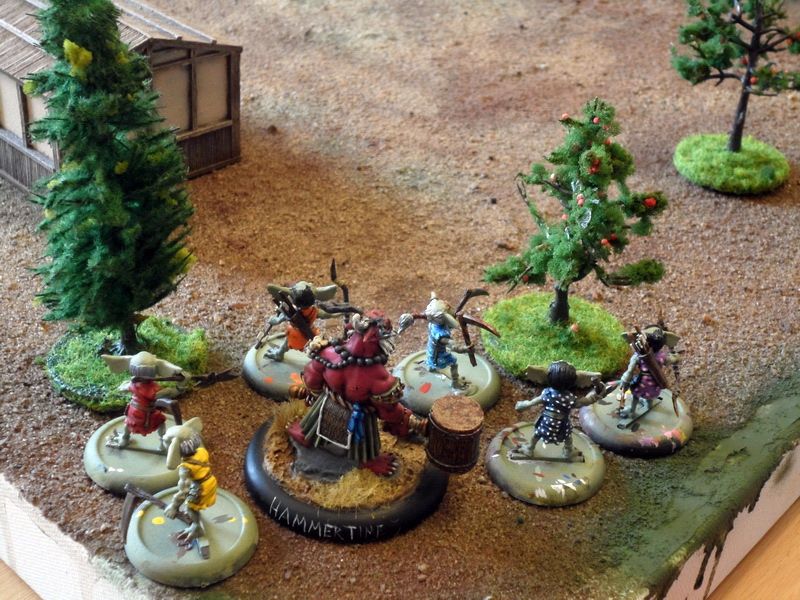
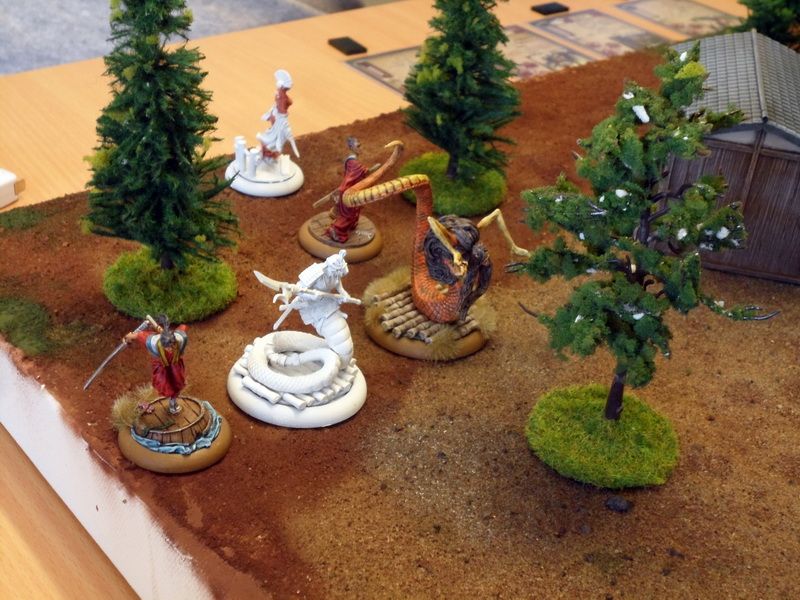
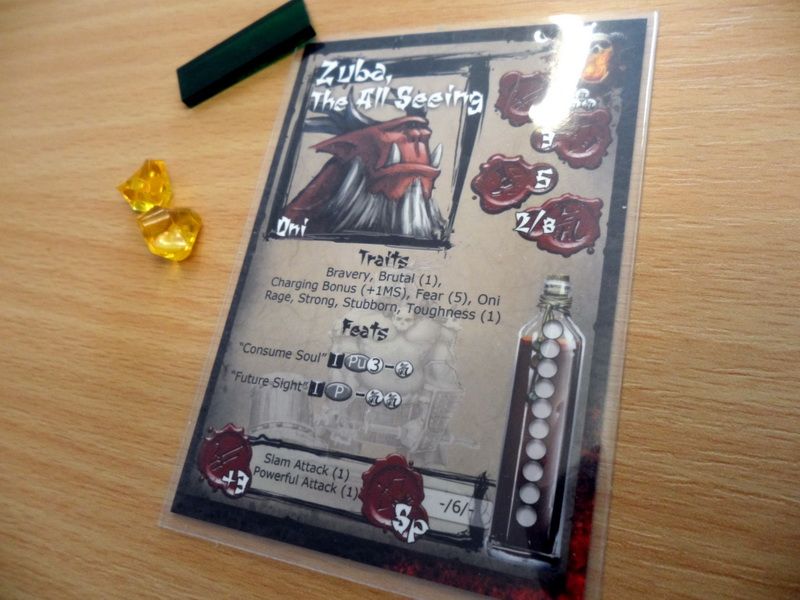 As a return favor for my By Fire and Sword demo Andreas ran a demo of Bushido for me, it's a game that I have seen but not really been able to make up my mind about and having also seen the catalogue of miniatures it was very hard to know what kind of game this was.
As a return favor for my By Fire and Sword demo Andreas ran a demo of Bushido for me, it's a game that I have seen but not really been able to make up my mind about and having also seen the catalogue of miniatures it was very hard to know what kind of game this was.Well, the demo game with Andreas answered a lot of questions. This post is a summary of my first impressions of the game and a bit of game mechanics and rules that I can remember.
Summary of Bushido:
Bushido takes place in a feudal Japanese setting, the factions are however a mix of real humans and fantasy elements from Japanese mythology I suppose. Some factions are made up of more or less only humans, while there are some that are more or less only monsters, and everything in between.
The game is always played on a tiny 60x60cm/2x2' area, games are always about a scenario (no mindless brain bashing) and at the core the game uses D6's to generate results from actions. It's also alternate activations which is the standard of most skirmish games nowadays. Each game also lasts 6 turns.
The number of models on the table is quite small, it's a "warband" game. Models are each worth X-amount of "rice" (points) and games are meant to be played in the area of 30-50 points. With the number of named characters I thought it would be like Malifaux where you need a "commander" or something like that, but Andreas said you can play with anything you like within your faction as long as you can pay for it in points. That means that you can field a couple of strong characters or a horde of minions. The choice is up to you and there are no faction restrictions beyond that you can't field more than 1 of each named character in your warband.
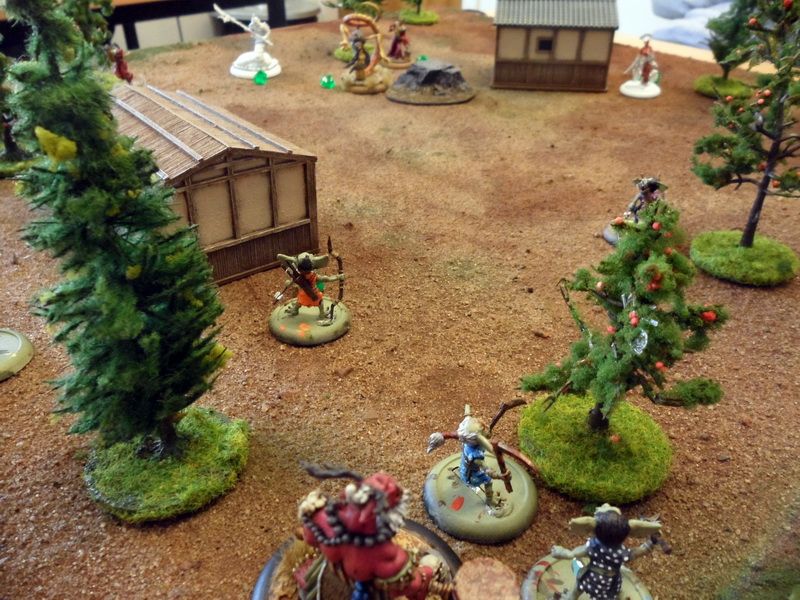
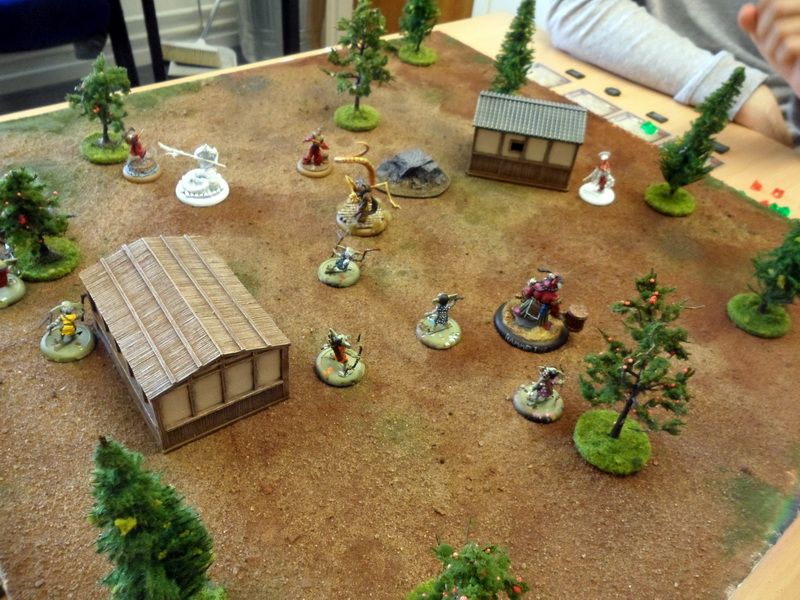
 Andreas said that the game plays like the old "Confrontation" game, which I never got to play - but a couple of things stood out the most to me during the demo:
Andreas said that the game plays like the old "Confrontation" game, which I never got to play - but a couple of things stood out the most to me during the demo: 1) All models can activate twice during a turn, but you can only perform 1 action at a time. This means that your little bow armed Bakamono monster (some kind of goblinoid creature) can use 1 action to move, then the enemy does something with one of his units, and after that you may move pick which model on your side to activate again - and can in this case activate the Bakamono to fire his bow.
1) All models can activate twice during a turn, but you can only perform 1 action at a time. This means that your little bow armed Bakamono monster (some kind of goblinoid creature) can use 1 action to move, then the enemy does something with one of his units, and after that you may move pick which model on your side to activate again - and can in this case activate the Bakamono to fire his bow.Now the broken up action point spending in itself is not revolutionary, but the added twist which the game mechanics apply makes a whole lot of difference. You see every time you activate your miniature OR is forced to react with your miniature you accumulate stamina loss. A model that has spent, or been forced to spend, both his action cannot activate for the remainder of the turn and will also be easier to attack as it's tired.
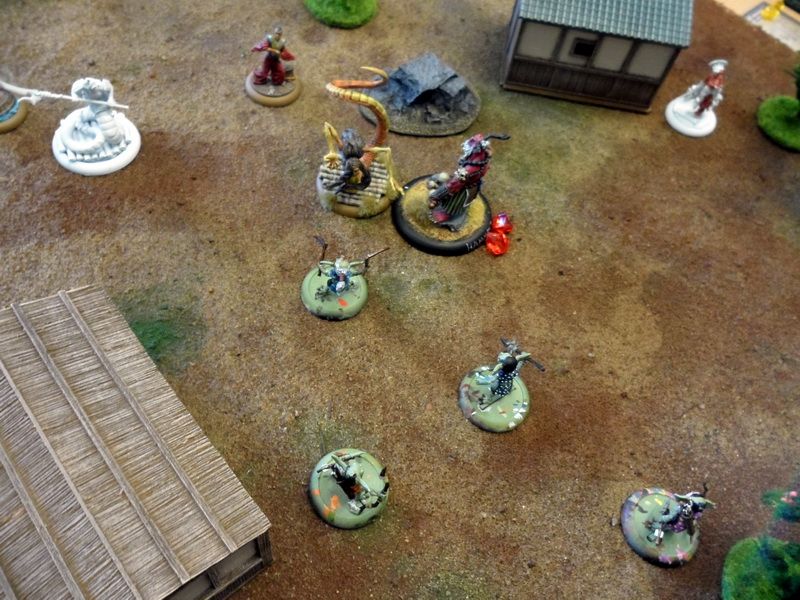 Exactly what this means in the game is that you can block strong enemy characters and monsters by forcing them to spend their actions in defense by you attacking them with small worthless minions. Locking down or limiting the potential of powerful monsters and characters seem to be a key component to victory as each game is all about scenarios - you don't have to kill the enemy - just prevent him
Exactly what this means in the game is that you can block strong enemy characters and monsters by forcing them to spend their actions in defense by you attacking them with small worthless minions. Locking down or limiting the potential of powerful monsters and characters seem to be a key component to victory as each game is all about scenarios - you don't have to kill the enemy - just prevent him 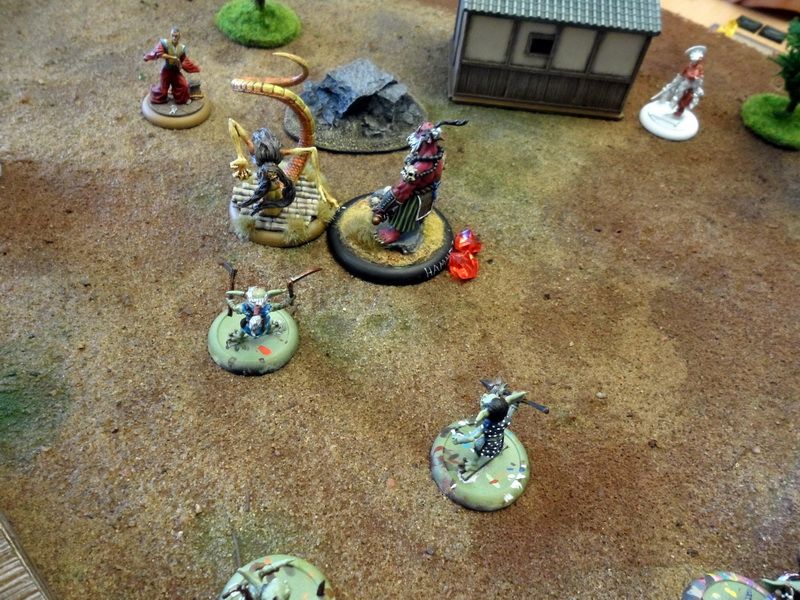 from completing his task! And as you might imagine, just opting to run a couple of very strong characters without any support can turn against you real quick.
from completing his task! And as you might imagine, just opting to run a couple of very strong characters without any support can turn against you real quick.2) Combat in the game uses D6 which I find as exciting as stale bread most of the time, but I am always impressed when a game manages to make something different with it. And Bushido certainly manages to do just that in a for me completely new way. Each miniature has X-amount of attack dice used in close combat. But, you bust secretly, before rolling the dice, choose the amount of dice to be used for Defense and the amount to be used for Attack. Sometimes the choice is clear, but most of the time you don't really want to be left without any defense dice because combat can be brutal.
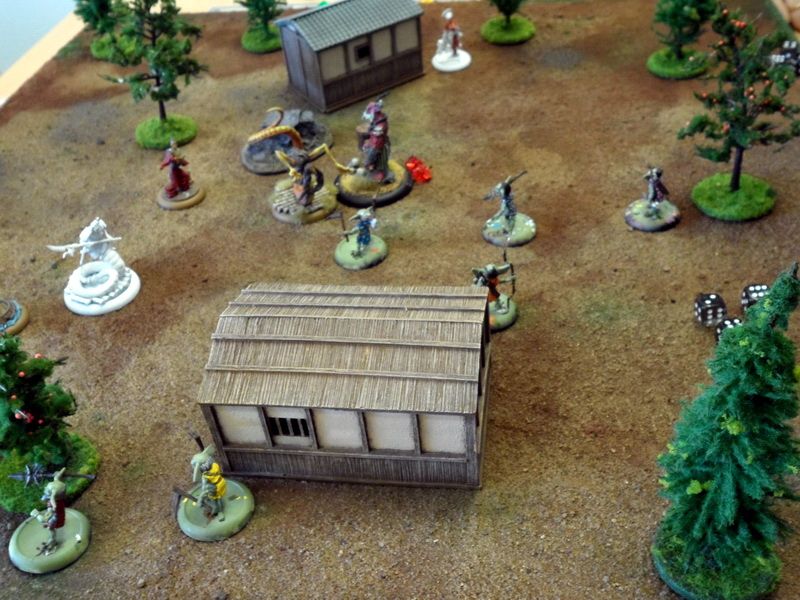
Dice rolling mechanics in Bushido works as such, both players take a number of designated D6 and roll them. You then pick the one highest result in your roll, and then add the number of remaining dice (except for those that rolled 1) to that result. Example, Rolling 3x D6, result is 4.2.2. That means your highest result is 4, you add the other dice you that result making your final result a 6. Had you rolled 6.4.4. the final result would have been an 8.
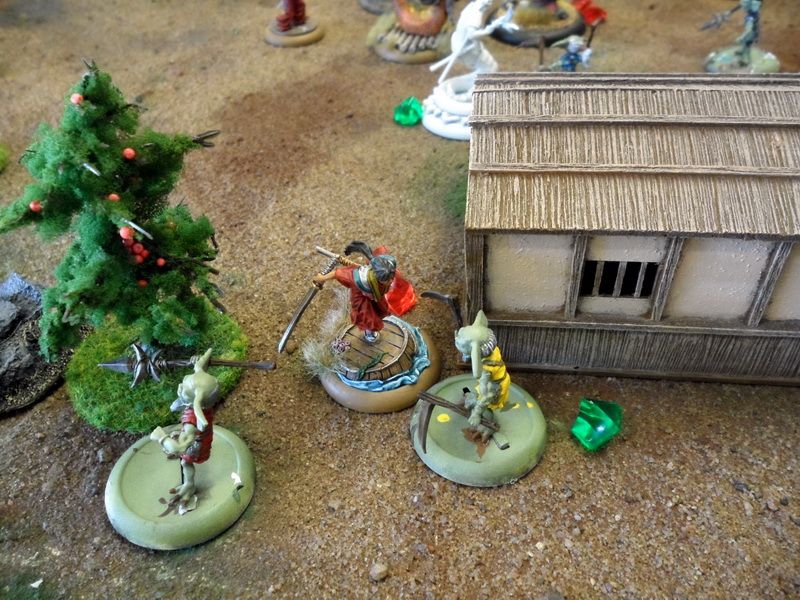 You then compare your attack score with the defenders defense score, if the number is equal to or higher than the defenders score the attack strikes home and has the chance to inflict damage. However, instead of rolling a regular Strength vs Toughness/Armor type of roll, players consult a chart that is divided into columns ranging from 0-12. The higher the difference of the attacker’s victory, the further down the line of damage columns you go. If you win by 5 you roll on
You then compare your attack score with the defenders defense score, if the number is equal to or higher than the defenders score the attack strikes home and has the chance to inflict damage. However, instead of rolling a regular Strength vs Toughness/Armor type of roll, players consult a chart that is divided into columns ranging from 0-12. The higher the difference of the attacker’s victory, the further down the line of damage columns you go. If you win by 5 you roll on 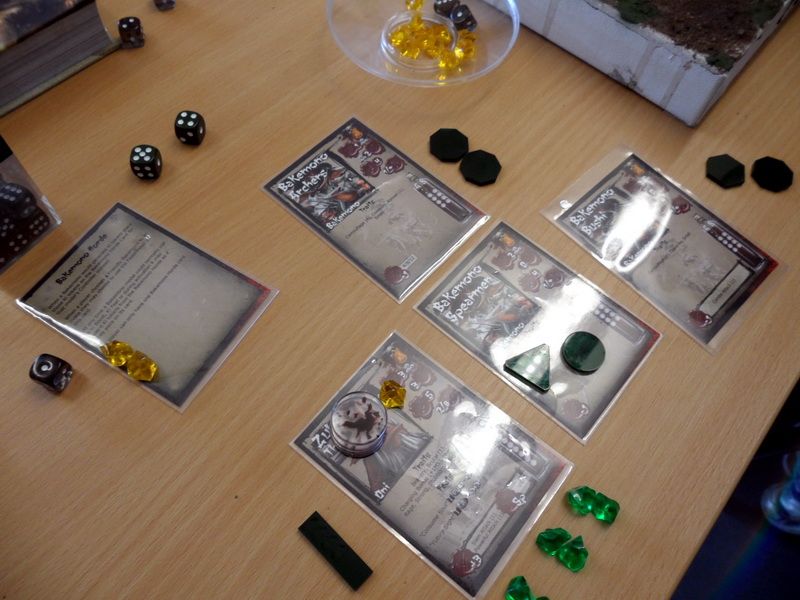 column nr.5 if you win by 12 you roll on column nr.12. Each column requires the player to roll 2d6 and score above a certain number to inflict a variety of damage points.
column nr.5 if you win by 12 you roll on column nr.12. Each column requires the player to roll 2d6 and score above a certain number to inflict a variety of damage points.As you can perhaps conclude the further down the damage column you go the easier it becomes to inflict damage and most important of all - the damage inflicted is increased vastly. And it's not really as complex as it may sound, but you will have to check the column chart when dealing damage unless you are Rainman.
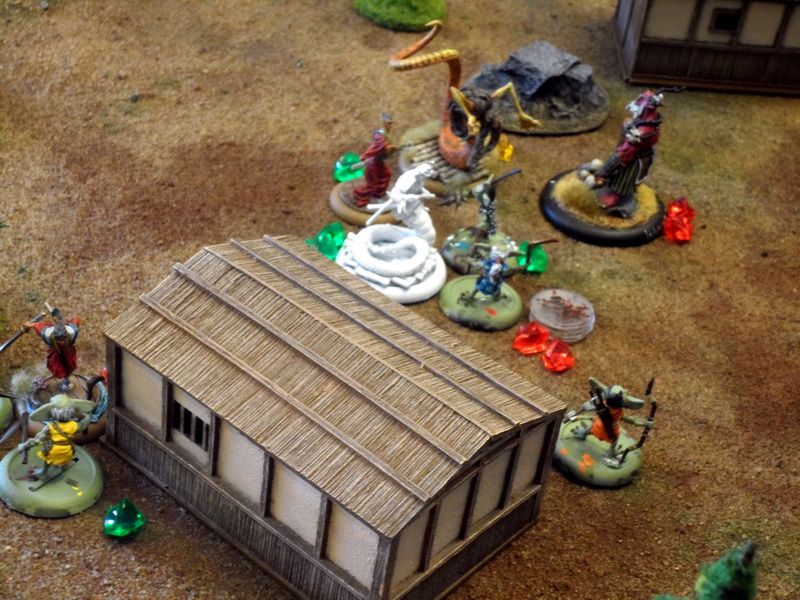 Ranged damage works pretty much the same as close combat, with two exceptions. Ranged weapons have short/medium/long range, each of them has a number telling you the range in inches and that is also the difficulty of scoring a hit. At medium range a Bow may require 8 to score a hit, which would require you to roll at least 3 dice, and have one of them turn out to be a 6 so you could reach the requirement. Since there is no defense roll from the target model, the damage column bonus derives from your ability to score a hit in such a way and with so many dice that you jump down the row of columns.
Ranged damage works pretty much the same as close combat, with two exceptions. Ranged weapons have short/medium/long range, each of them has a number telling you the range in inches and that is also the difficulty of scoring a hit. At medium range a Bow may require 8 to score a hit, which would require you to roll at least 3 dice, and have one of them turn out to be a 6 so you could reach the requirement. Since there is no defense roll from the target model, the damage column bonus derives from your ability to score a hit in such a way and with so many dice that you jump down the row of columns. This makes shooting very difficult to both hit and deal damage with beyond short range, but makes shooting very deadly and close range.
3) The third and last thing that stood out is connected to the combat is that each faction has some kind of resource handling, it's different from faction to faction, but using the demons that I played as an example each model generate a "Chi" marker. Chi markers could be traded in for additional combat dice, to cast magic spells or summon additional minions onto the table. This resource carried over from one turn to the other, so it was wise to save up a bit so you could trade in for a number of additional extra combat dice when you really wanted to kill something or avoid being killed by a powerful attack. In combination with the dice rolling mechanic, being able to trade Chi in for additional dice could boost average fighters and make them quite good or make it possible to fire a bow at a range span previously deemed impossible.
So that is my summary of Bushido. I actually liked it quite a bit, the theme of the game is not really my cup of tea - but there is at least 1 faction with "generic" humans/Samurai warriors that I could consider collecting and playing with myself.
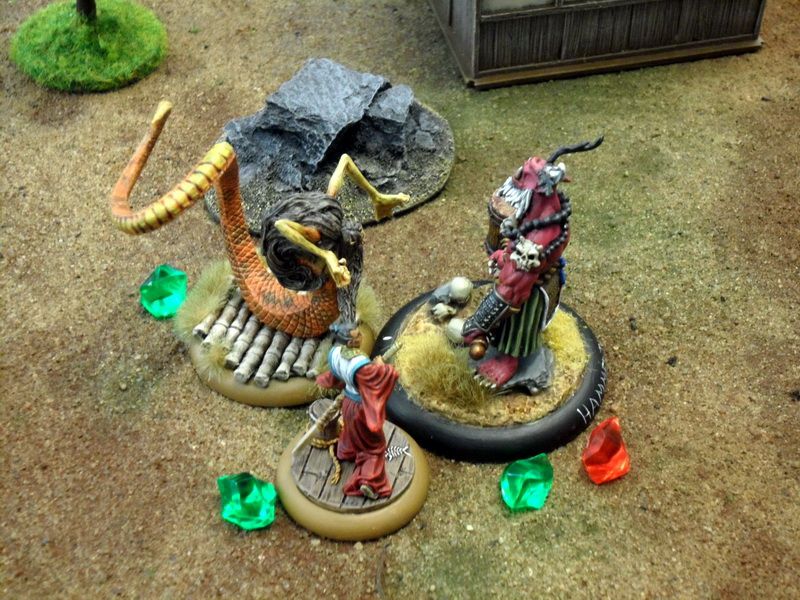
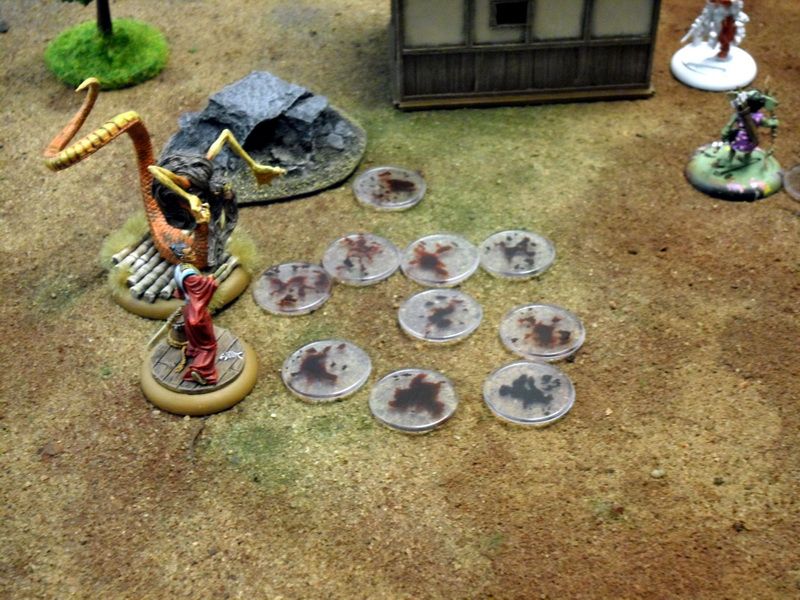
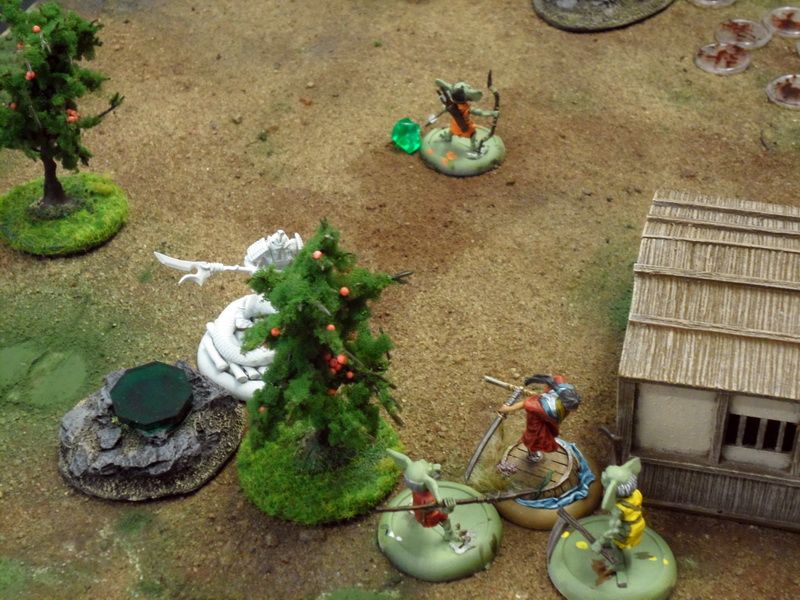
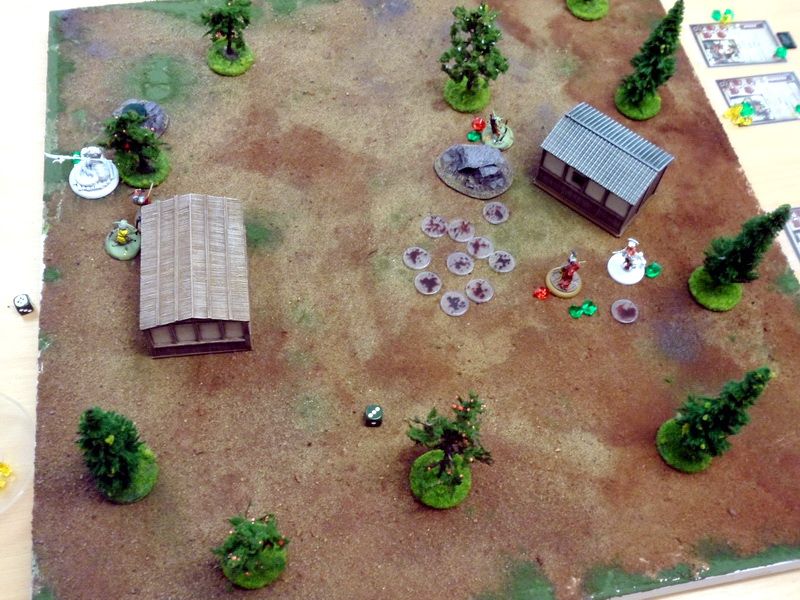
No comments:
Post a Comment